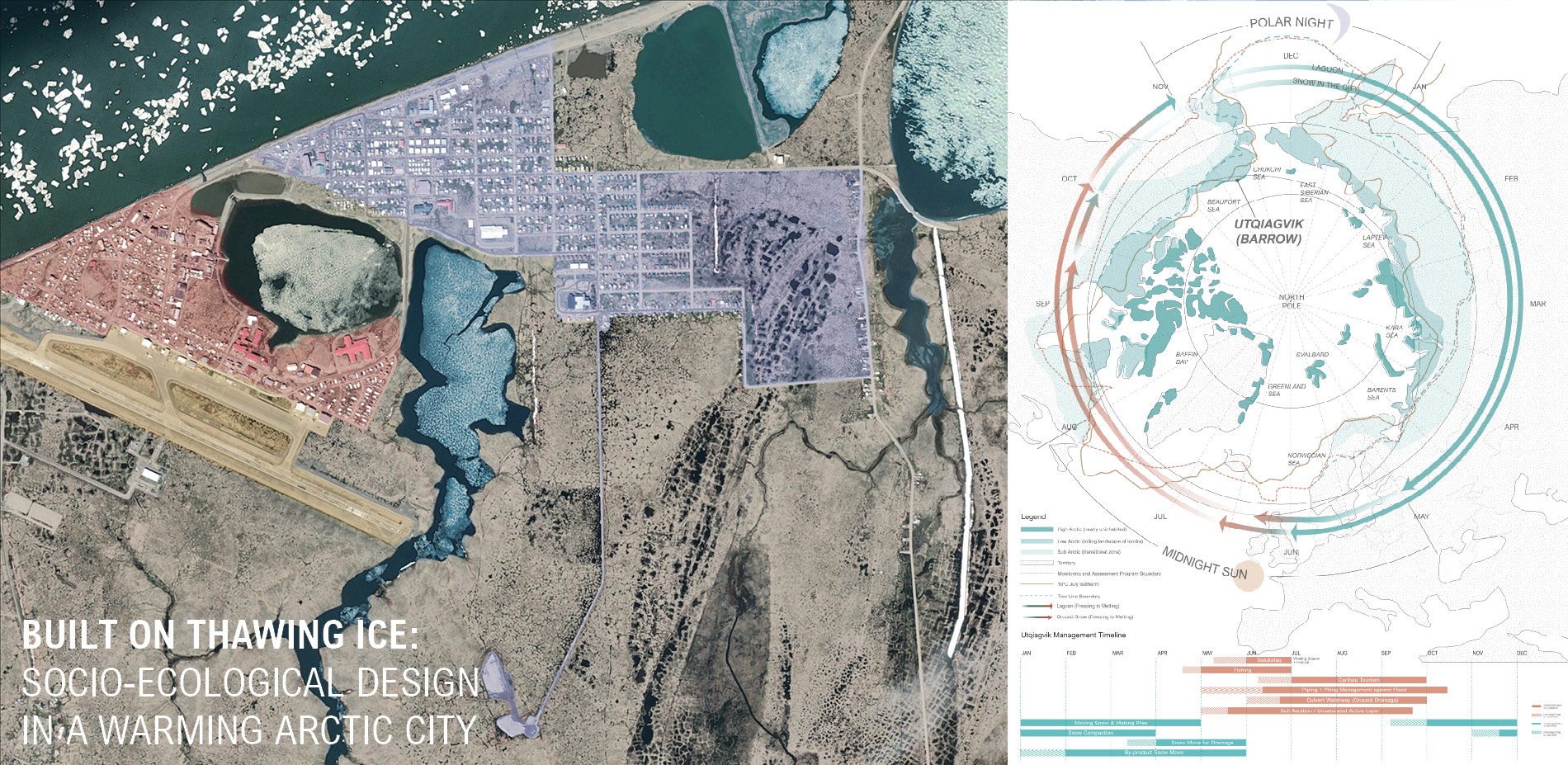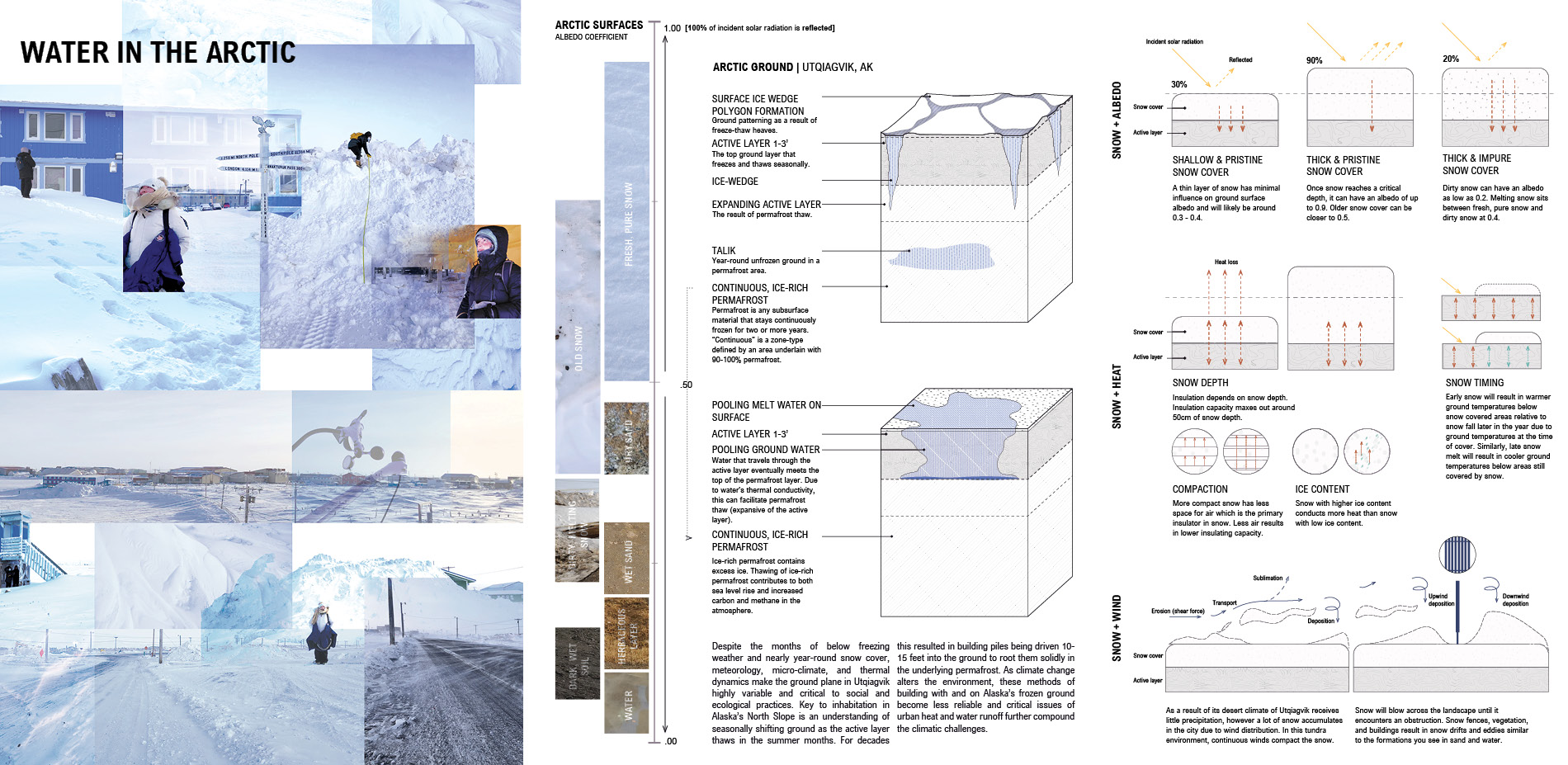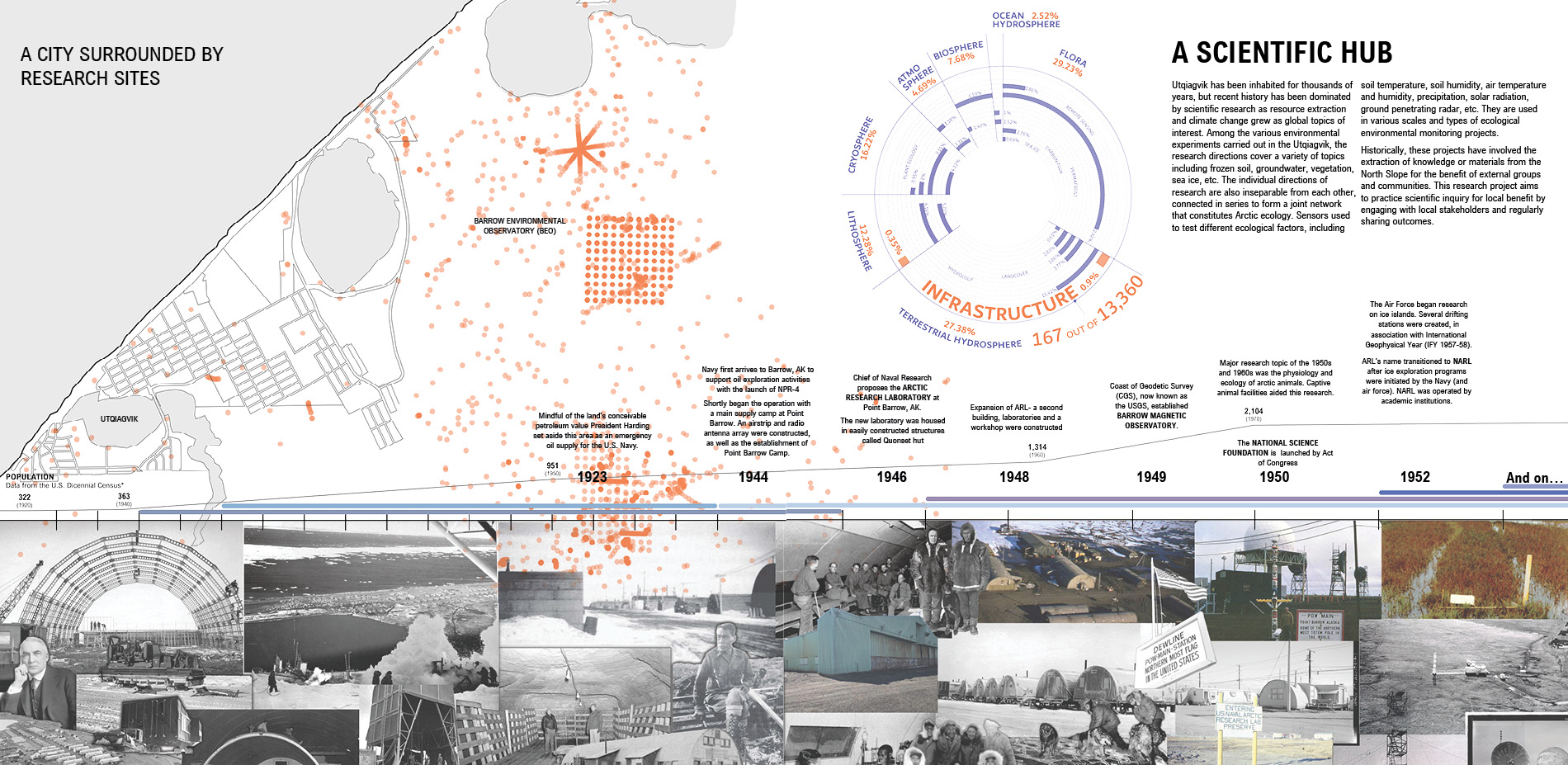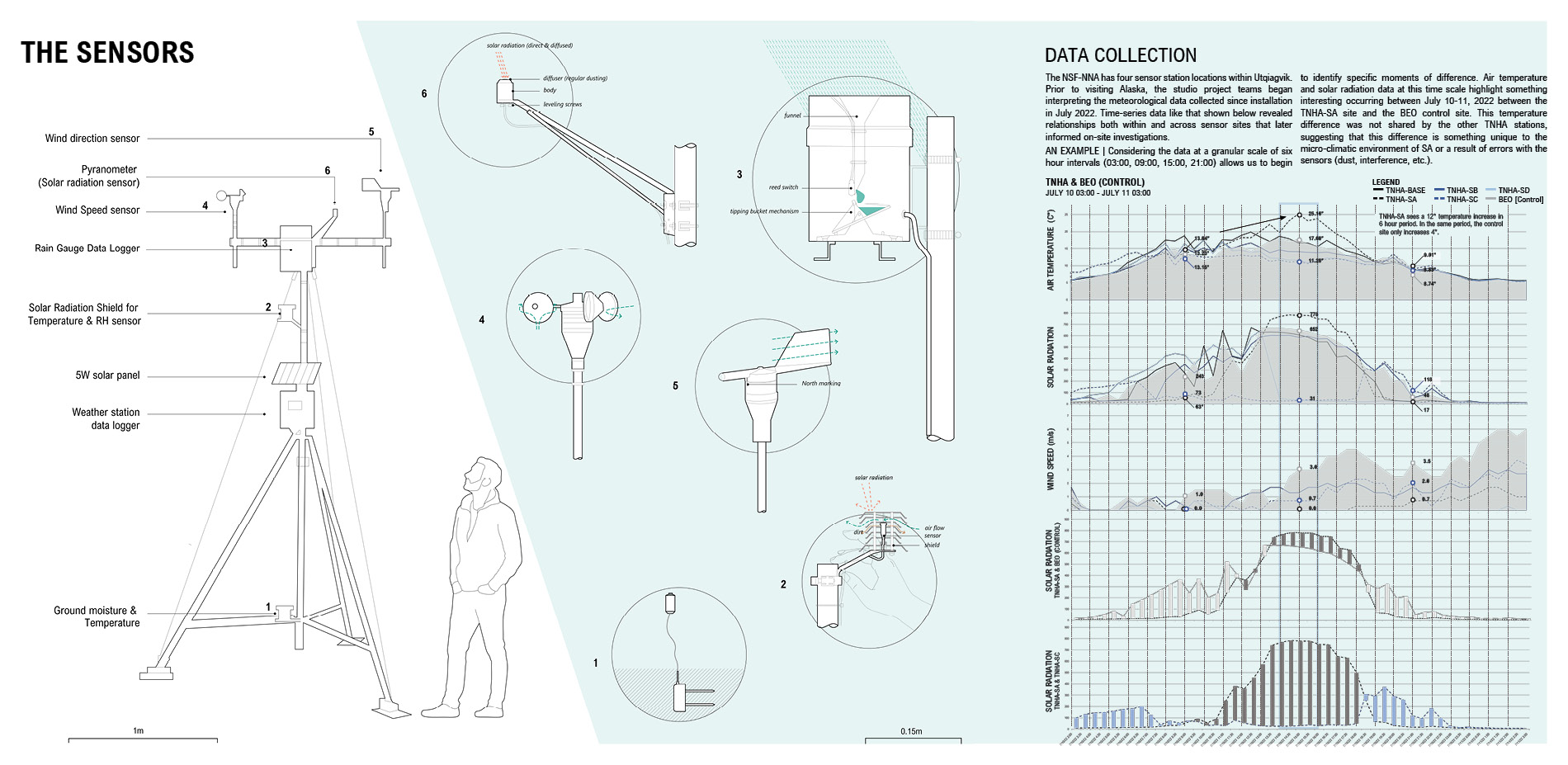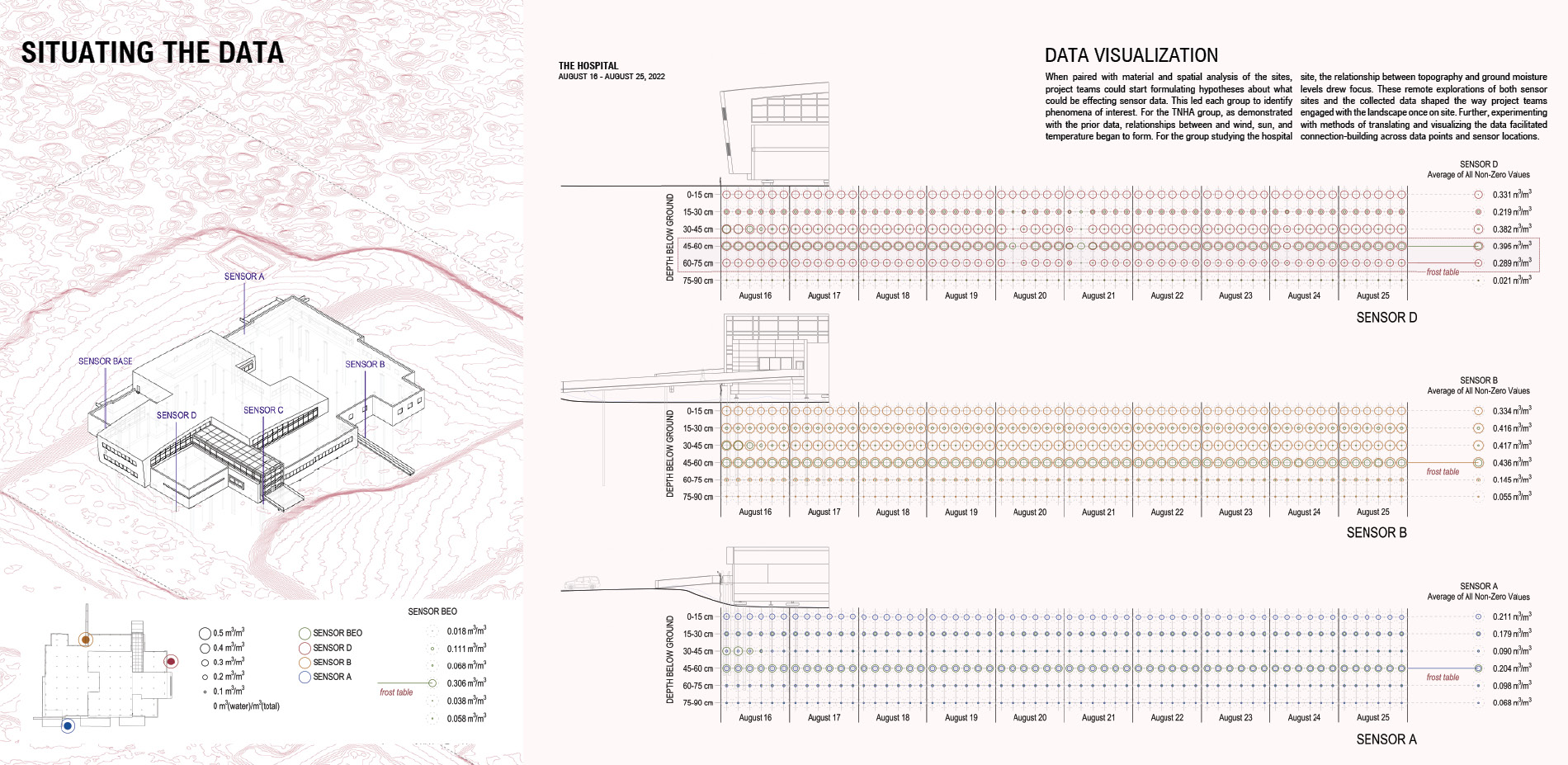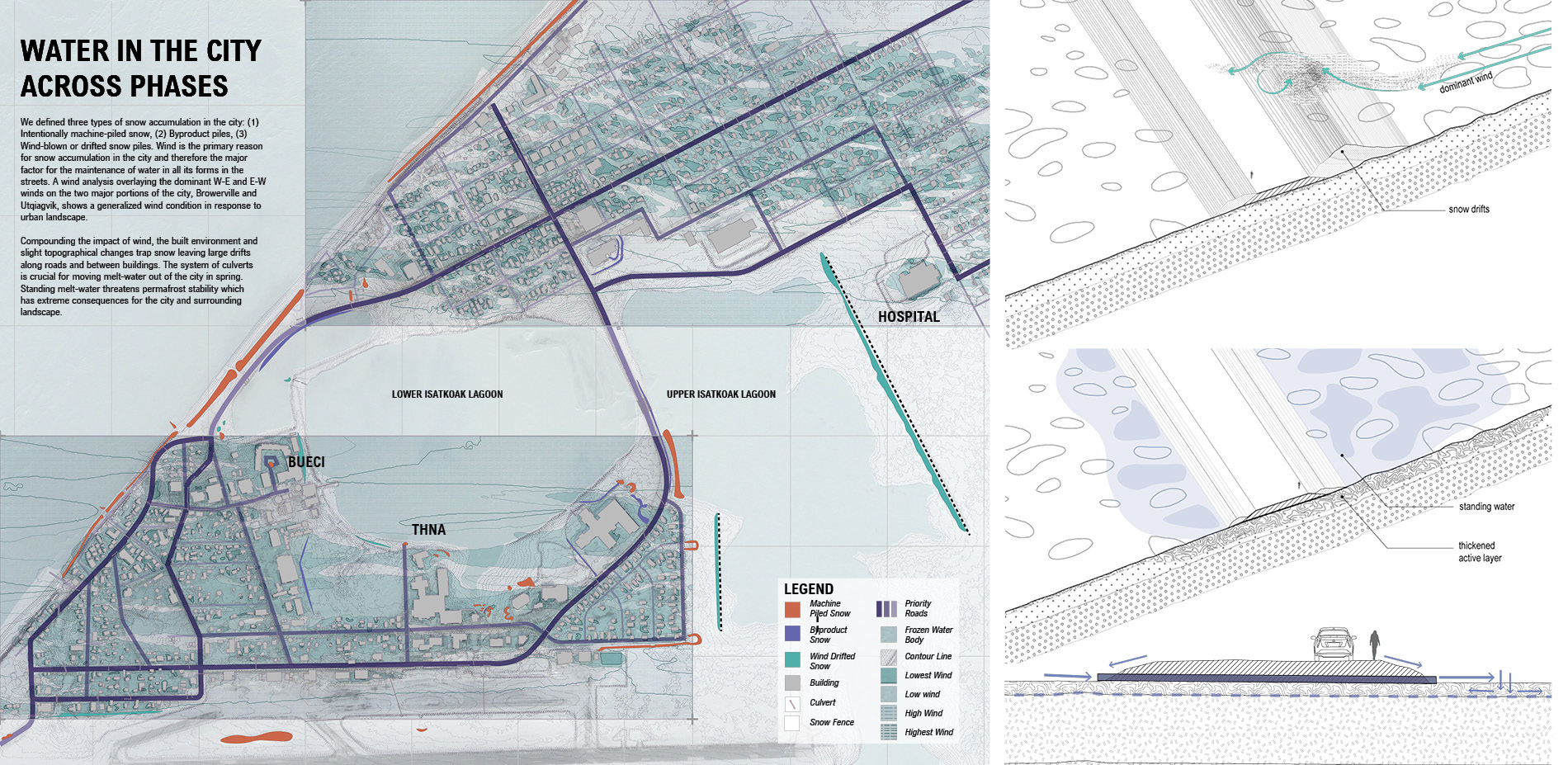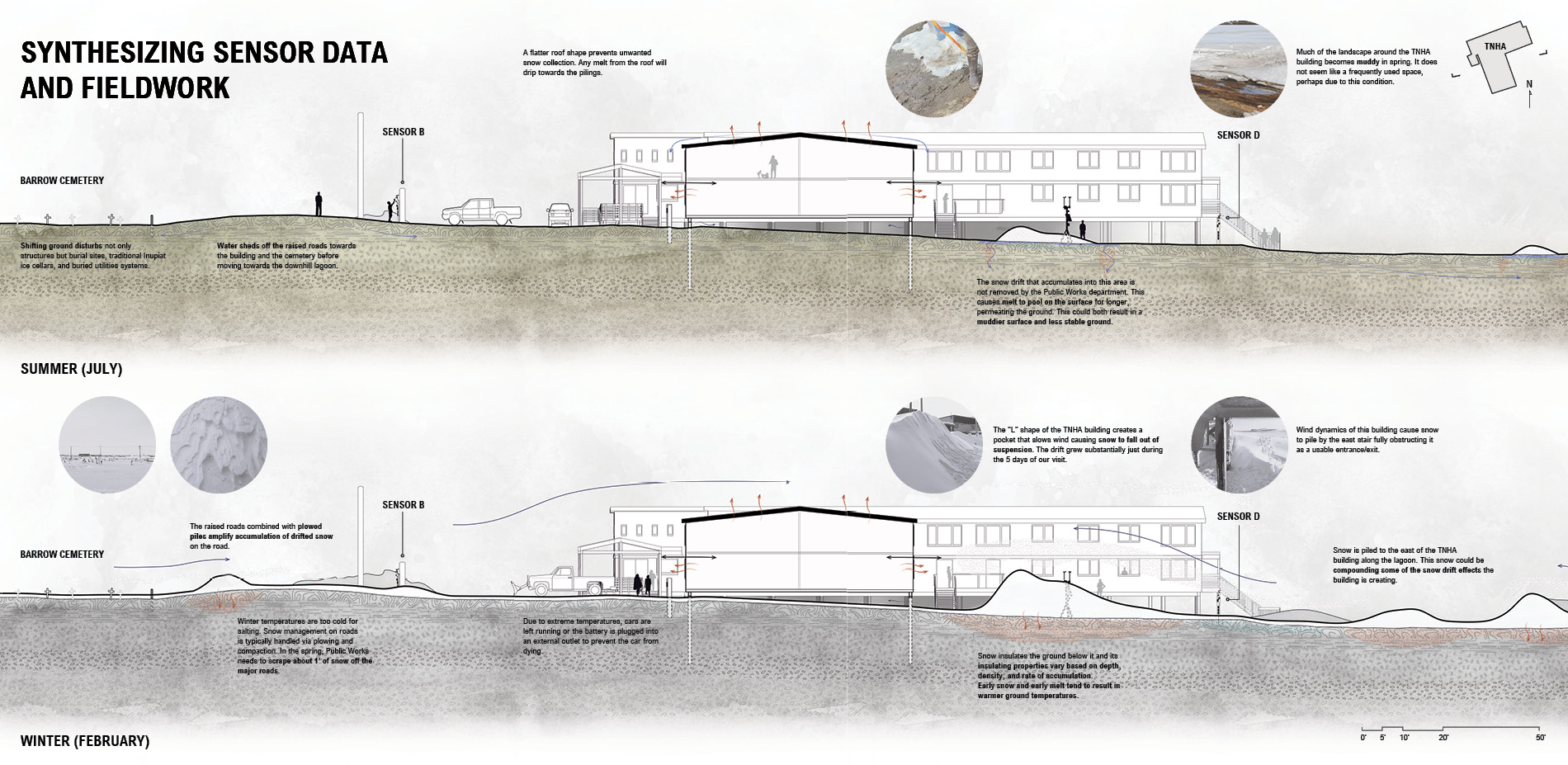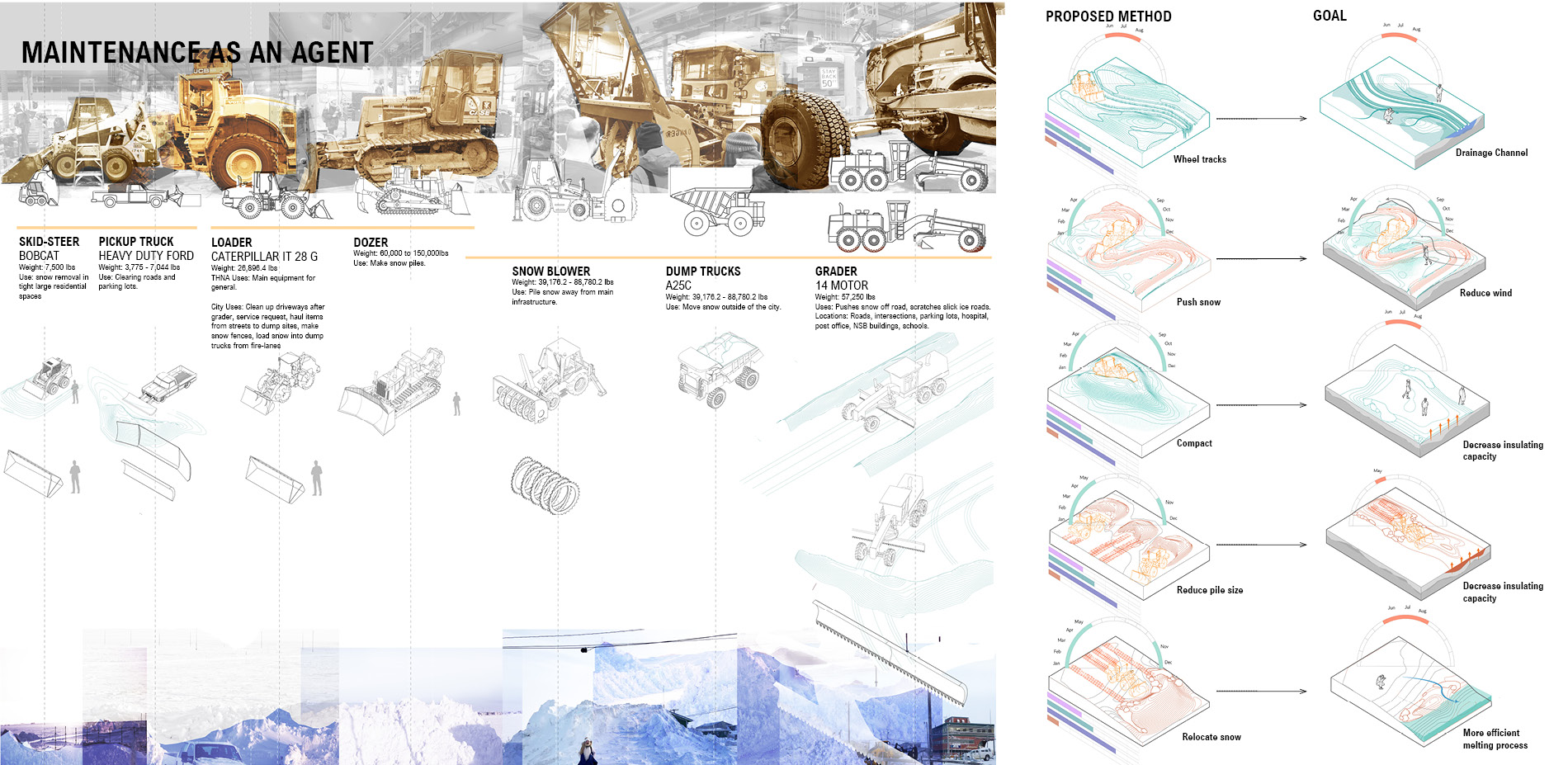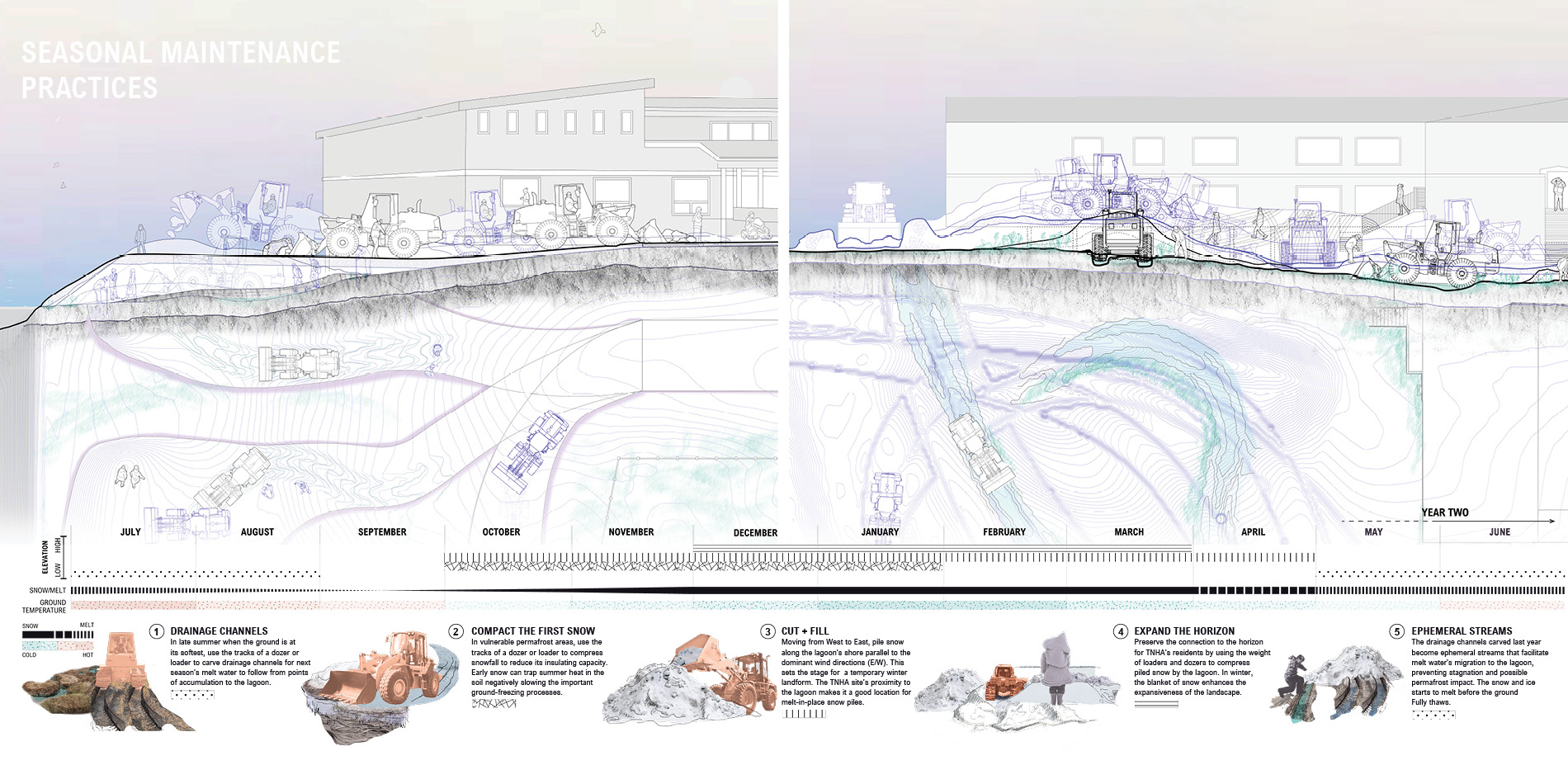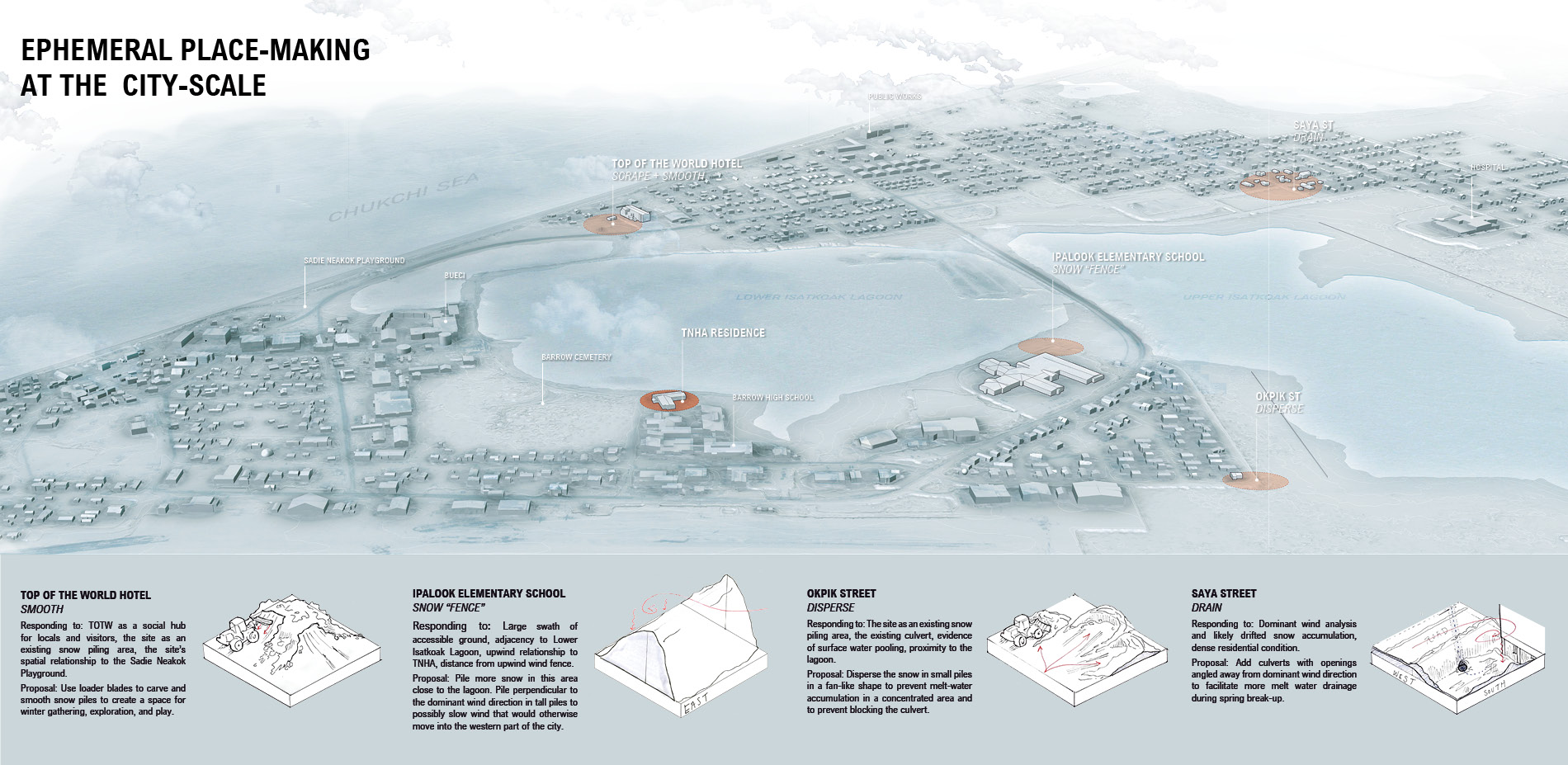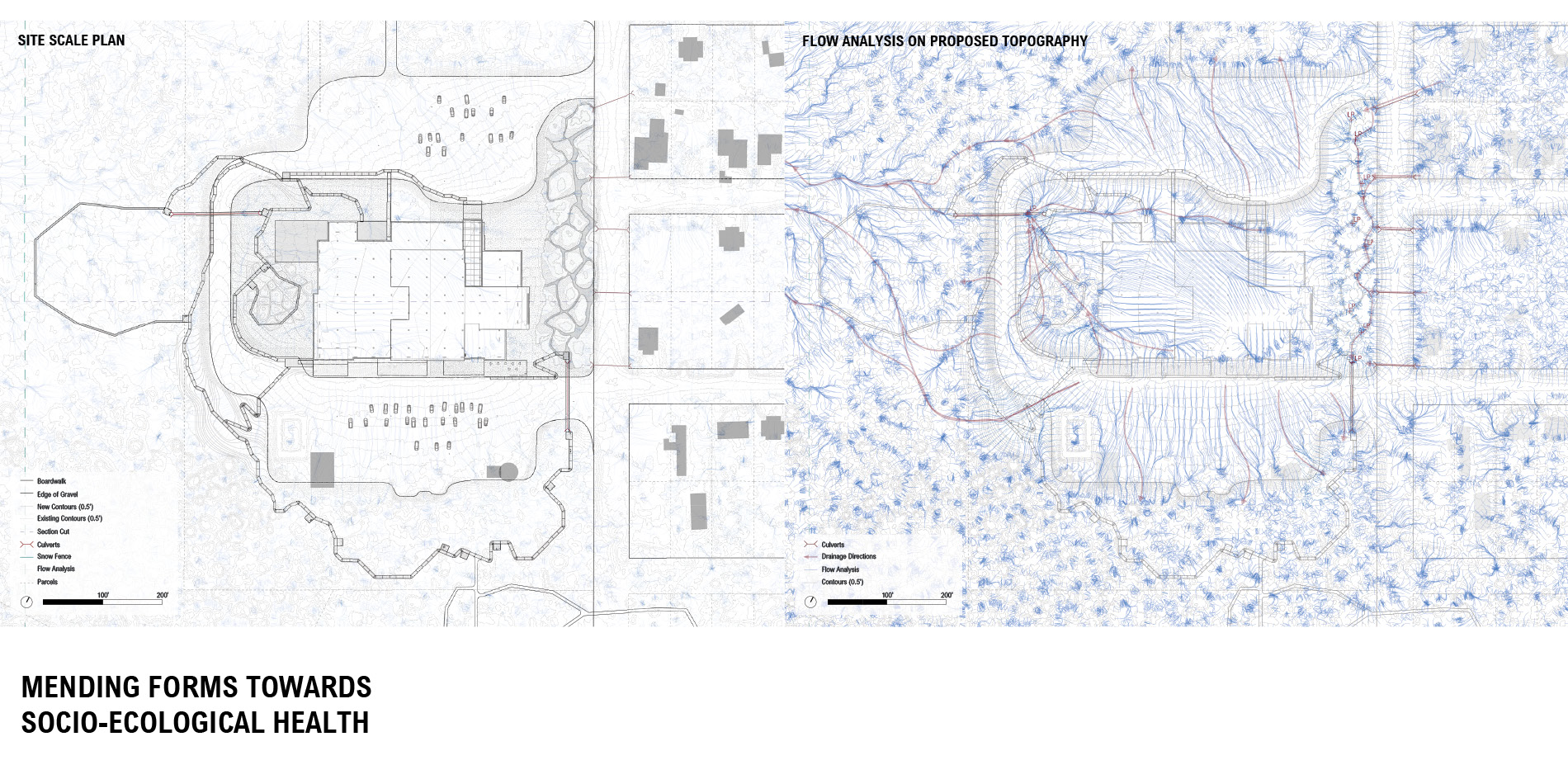Built on Thawing Ice: Socio-Ecological Design in a Warming Arctic City
Honor Award
Research
Utqiagvik, Alaska, United States
Judy Shao-Yu Chen;
Yizhuo Chen;
Yash Gadam;
Jessica Huang, Associate ASLA;
Mijeong Jung;
Amy Schulz;
Phoebe Tamminen;
Nita Wareechatchai;
Chen Yu;
Yi Zhu, Student ASLA;
Faculty Advisors:
Leena Cho;
Matthew Jull;
University of Virginia
A beautiful and fascinating study of a landscape the mainstream profession knows little about. Great project. The submission takes on a challenge that is not currently considered in mainstream LA and will become more so with climate change. Very well researched, especially quantitative, from a technical and site-specific point of view.
- 2023 Awards Jury
Project Credits
Howard Epstein, Caitlin Wylie, Hannah Bradley, Marantha Dawkins, MacKenzie Nelson, Mirella Shaban, Patrick Sardo, Ross Brown
University of Virginia Arctic Research Center (UVA-ARC) NNA-Utqiagvik Research Team
Chastity Olemaun, Mabel Kaleak, Sean Oyagak Gunnells
North Slope Borough (NSB) Dept of Planning and Community Services
Scott Danner, Robert Terzioski
North Slope Borough (NSB) Dept of Public Works
Bernadette Adams, Nok Acker
North Slope Borough (NSB) Dept of Capital Improvement Program Management
Lars Nelson
North Slope Borough Assembly Member; CEO, TRIBN
Griffin Hagel, Erik Johnson, Scott Bailie, Craig Bell, Andrew Kroll
Taġiuġmiullu Nunamiullu Housing Authority (TNHA)
Timothy Russell, Aniseko "Seko" Unutoa, Yves Brower, Jay Berry, Tom Drake, Annie Rexford
Barrow Utilities and Electric Cooperative, Inc. (BUECI)
Jason Peterson, Taivaleoaana "Seven" Toleafoa
Arctic Slope Native Association (ASNA)
Tom Douglas, Lauren Bosche
US Army Corps of Engineers’ Cold Regions Research and Engineering Laboratory (CRREL)
Aaron Cooke
National Renewable Energy Laboratory / Cold Climate Housing Research Center
The studio was funded by the U.S. National Science Foundation award #2022639
Project Statement
The Arctic is warming four times faster than the rest of the world. Utqiagvik, AK is increasingly affected by thawing ice-rich permafrost that destabilizes the environment, infrastructure, and cultural practices. This project highlights the critical role of water—snow, ice, and meltwater—in shaping public space, maintenance, and the future development in Utqiagvik. Born from community engagement, data analysis, and field work, two-site specific designs propose maintenance strategies and ecological restoration to stabilize permafrost at the site-scale while considering broader implications at the city-scale. These initial explorations build connections across disciplines and cultures to fill knowledge gaps to benefit Arctic communities.
Project Narrative
Goals: The Arctic is warming four times faster than the rest of the world. Communities built on ice-rich permafrost like Utqiagvik, AK are increasingly affected by unstable ground. Our research goals are to generate locally implementable design that minimizes permafrost degradation while elevating everyday cultural practices, and to co-produce narratives with community and research partners that directly benefit the community. By focusing on the phases of water—snow, ice, melt—that uniquely shape this region our research investigates what it means to design with hydrological and thermal dynamics outside of temperate landscapes.
Context: This project is part of ongoing NSF-funded research led by a multidisciplinary team of faculty. It is one of a few federally funded design research studios and encompasses close partnerships across seven academic disciplines, five local Inupiat organizations, and two federal research laboratories.
Methods: 1) Archival research on Utqiagvik’s relationship to scientific practices, 2) analysis of micrometeorological and ground sensor data, 3) relationship-building and listening sessions with Inupiat partners, 4) in-situ winter fieldwork, and 5) discussions of hydro-thermal conditions with Arctic experts from non-design disciplines. These methods allowed us to understand the entangled relationships of extreme climatic conditions, urban development and community agency at the nested scales of the body, site and city, and to synthesize our research in two key site-specific designs.
Propositions:
Site 1: Building on existing practices, we position urban maintenance as a socio-ecological agent to stabilize permafrost while improving quality of life for residents of a 29-unit low-income housing site—one of the city’s snow dump sites. Working closely with the local housing authority and dept. of Public Works, we propose melding current snow- and melt- management strategies with understandings of the site’s permafrost vulnerabilities and fieldwork data to reduce snow insulating capacity, establish seasonal meltwater channels, and improve pedestrian access. At the urban scale, this positions maintenance as a proactive practice of ephemeral place-making with both seasonal and long-term implications.
Site 2: We propose tundra restoration for improved socio-ecological health and urban development at the hospital, a local social hub and a regional medical resource. On-site fieldwork and listening sessions with the Arctic Slope Native Association identified recurring flooding as a major concern. We offer an expansion of health into the landscape through restoration of ice-wedge polygon landforms that reduce standing surface water and support a meditative boardwalk. This positions landform restoration as a creator of both drainage and public space, and organizes urban development as an extension of tundra landscape.
Significance: This project emphasizes water's role in public space, maintenance, and the future development of Utqiaġvik. It demonstrates how remote sensing transformed our engagement with the landscape, connected us to the community in new ways, and prompted sites and methods for future sensor deployment. It broadened the concept of "data" to include lived and embodied experiences. These explorations contribute to Arctic design scholarship, bridging disciplines and cultures to benefit Arctic communities. These initial findings will be shared with local stakeholders in-person this summer.
